Red chimichurri sauce (chimichurri rojo) with roasted red pepper and smoked paprika to serve with grilled meat, veggies or use as a delicious marinade. This Argentine sauce is made from roasted red pepper, olive oil, red wine vinegar, parsley, crushed red pepper flakes and a blend of other ingredients that create a delicious condiment that adds a smoky depth of flavor to everything else on the table!
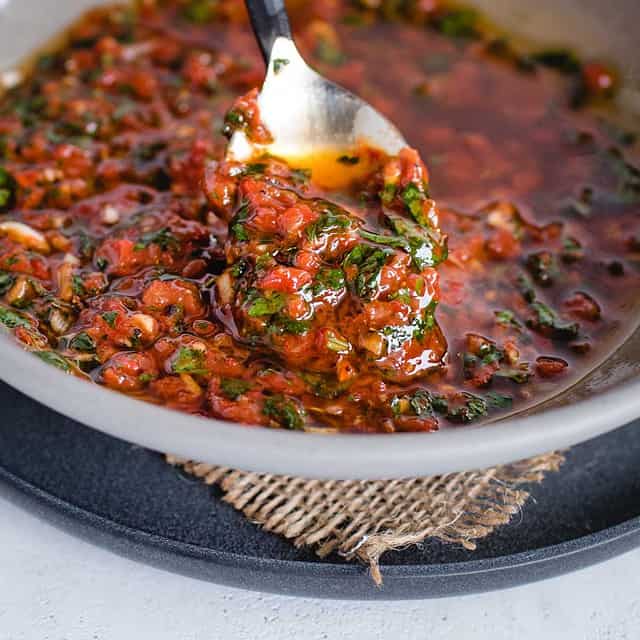
We fell in love with chimichurri sauce on our trips to Argentina and came back singing it’s praises. After visiting several times and tasting so many different variations, I definitely came home with a good understand of what works best in this classic chimichurri and what to leave out (in my opinion).
As I shared in my cilantro chimichurri recipe, there isn’t one standard traditional chimichurri recipe and authenticity is really based around keeping the core elements the same. Everyone seems to make it a bit different though which is part of the fun of this fabulous sauce.
I put this recipe together after years of testing and sampling and this is the best red chimichurri recipe I’ve had yet. It has the characteristic punch of flavor without any unnecessary complications. I hope you enjoy this smoky sauce and it’s earthy red color as much as we do.
Make sure to also check out my version of the Trader Joe’s chimichurri rice! It’s the perfect side to go with a chimichurri themed meal. If you still can’t get enough or are just looking for a good compound butter to melt on top of your steak, my chimichurri compound herb butter is just the thing.
What is Red Chimichurri?
Red chimichurri sauce is a vibrant, flavorful sauce commonly used as a condiment or marinating sauce. It originates from Argentina but is common in other parts of South America and steak houses across the world.
If you’re familiar with traditional green chimichurri, think of this as the red version. They’re often served side by side in Argentina where this one is called chimichurri rojo. With the addition of roasted red pepper and sometimes paprika that give it a bright crimson color and smoky flavor profile.
It’s best when it’s slightly chunky with the perfect balance between bright acidity, smokiness, bite from the garlic and red pepper flakes and rich red pepper flavor. When done right, it’s truly a spoonful of heaven!
At it’s base, it consists of blended roasted red pepper, fresh herbs, garlic, red onion, vinegar, and olive oil and then other ingredients are added in depending on the recipe. As long as it has that base, other ingredients are the discretion of the chef. Ingredients vary across different authentic Argentinian red chimichurri sauce recipes.
I added smoked paprika, crushed red pepper and replaced the red onion with shallot for a little less bite. It’s always seasoned to taste with salt and black pepper to balance it out too. Some use oregano, a hot pepper, and tomatoes but I thought those bold flavors overwhelmed the robust but delicate flavor of the sauce and left them out of this red chimichurri recipe.
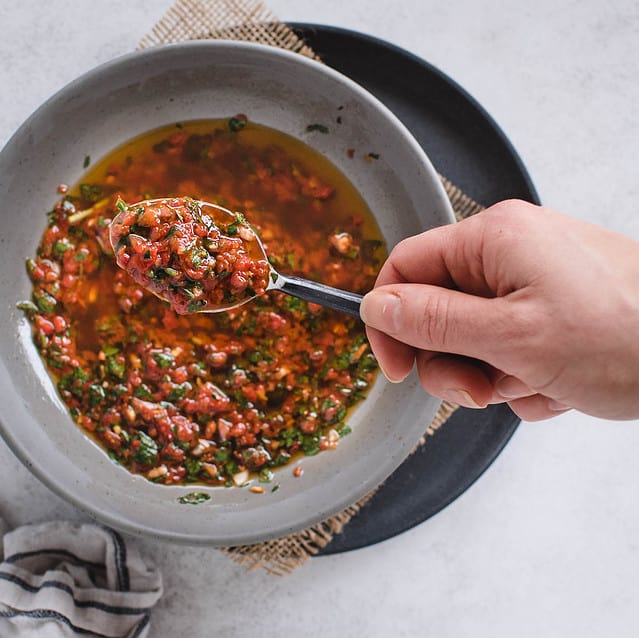
Ingredients
The key to making a good chimichurri is using fresh ingredients and quality oil and vinegar.
- roasted red peppers – I used jarred red bell peppers but you can easily roast your own.
- fresh parsley – you can use fresh cilantro instead if you want for a bit of different flavor.
- garlic the cloves of garlic have to be fresh for the best results and you can add more if you like that garlic spiciness to come through.
- shallot – you can substitute red onion but shallot creates a more delicate result with less of that raw onion forward bite to it.
- red wine vinegar – red wine vinegar is truly the best here. Some versions use lemon juice, lime juice, apple cider vinegar, or distilled white vinegar and you can substitute those if you must.
- salt – I use Himalayan, taste and adjust salt to taste.
- smoked paprika – can substitute regular paprika but smoked really is excellent. I especially recommend smoked paprika if pairing with grilled or smoked meats and vegetables.
- black pepper – black pepper adds a bit of kick but you can leave it out and just add a touch more crushed red pepper if you want.
- crushed red pepper – optional if you want it spicy but using just a little adds a subtle kick that really enhances the sauce. You can just add more black pepper if you want or substitute chili crisp oil for a tasty Asian twist!
- extra virgin olive oil – evoo is a must here! You can sub in another mild flavored oil like avocado oil, but I recommend using extra virgin olive oil.
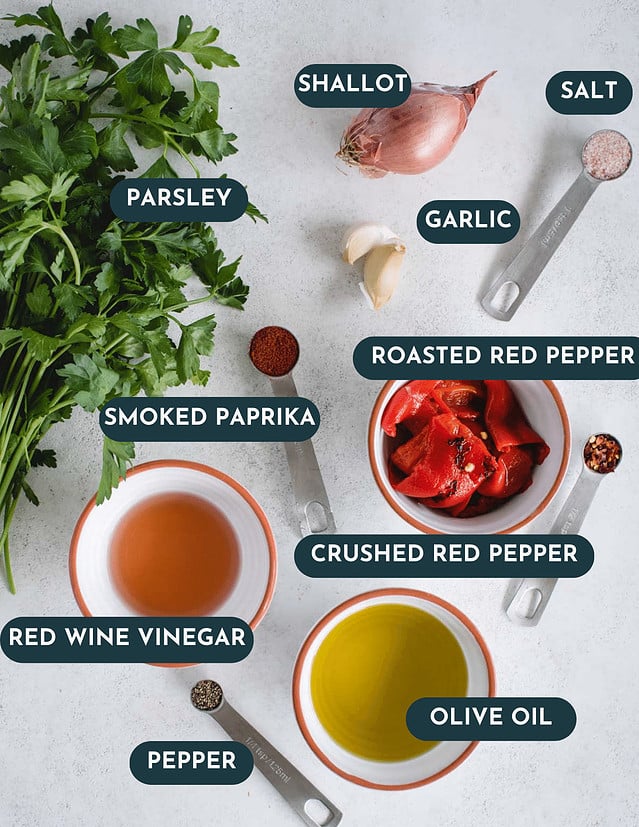
How to Make Red Chimichurri Sauce
Making chimichurri is as easy as can be. I use a mini food processor or blender but I’ve also done it solely with a knife before which was fine too.
- Add everything except olive oil to a mini food processor or blender.
- Pulse until all is well chopped but not puréed. A little chunk is good here. If you don’t have a food processor you can finely mince the red pepper, parsley, shallot and garlic and just stir the remaining ingredients in.
- Pour the mixture into a small bowl using a rubber spatula to scrape the insides of the blender.
- Drizzle in olive oil, adjust salt and spice level to taste and serve.
Storage and Freezing
One of the best parts about chimichurri is how well it keeps. It’s the gift that keeps giving!
Refrigerator Storage: Store in a glass jar or other airtight container in the refrigerator for up to 3 weeks. Remove from refrigerator half hour before serving. This allows it to come to room temperature since the olive oil may solidify. To prolong the life of the chimichurri, you can drizzle more olive oil on top before placing back in the refrigerator.
Freezing: Chimichurri can be frozen in ice cube trays and then once frozen, store frozen cubes in a tightly sealing freezer bag for up to 3 months. Remove as much of the air from the bag as possible to prevent freezer burn and make it last longer.
Tips and Tricks
Recipe Notes:
To roast your own red bell peppers: Jarred is completely fine here but if you want to roast your own you certainly can. Roast seeded and halved red peppers cut side down at 450° F (232° C) for 15-20 minutes. Gently peel away skin and discard.
Drizzle the olive oil: You may be tempted to just add the olive oil to the blender with everything else but please don’t! Drizzle it in after for the best texture in this and other oil-based sauces, otherwise the blending will cause the oil to become frothy.
Use a high quality olive oil and vinegar: Did you know many olive oils on the grocery store shelf have been diluted with other cheaper oils like canola, sunflower oil or soybean oil? While vinegar isn’t faked, it’s taste varies quite a bit with the cheapest ones tasting overly acidic and better quality vinegars having a more distinctive smooth taste, usually for just $1- $2 more per bottle.
To use as a marinade: Marinade meat in chimichurri for at least 2 hours, preferably overnight for chicken, steak, or pork. Seafood and vegetables should be marinated for under 1 hour before cooking as desired. When using as a marinade, I typically double the sauce and reserve half to serve alongside.
To make it spicy: As written, just 1/2 – 1 teaspoon of crushed red pepper flakes adds a little heat without creating an overly spicy sauce. You can add more black pepper, red pepper flakes or a finely minced jalapeño or other chili peppers. For a touch of asian flair you can drizzle in chili crisp oil or garlic chili sauce.
Diet friendly: This recipe is vegan, dairy-free, gluten-free, paleo, Whole30, Keto, low-carb and probably safe for multiple other diets as well. It’s healthy and full of healthy fats, Vitamin C and other nutrients.
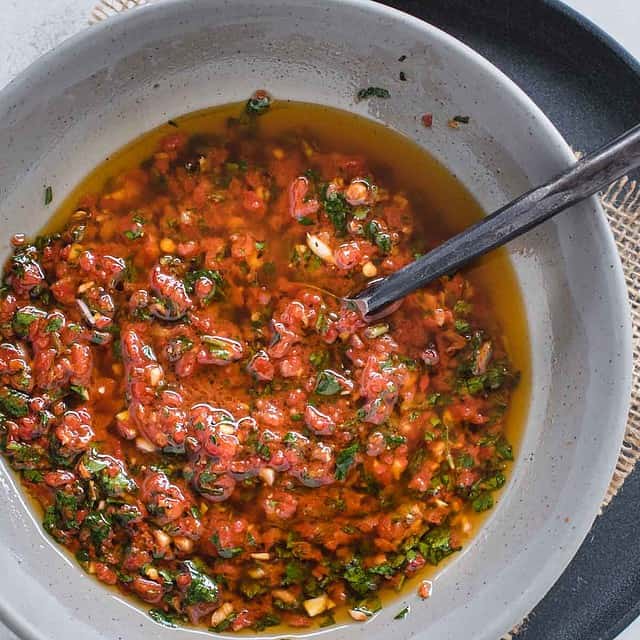
What to Serve it With
Chimichurri is an undoubtedly versatile sauce. It pairs well with everything and can elevate the flavor of pretty much any dish. Some of the best things to serve it with are:
- The Argentine way – steak of course! It goes well with flank steak, skirt steak, a good ribeye or any good steak
- Other grilled meats (chicken, fish, pork, lamb, Shrimp, etc.) as a sauce or even a marinade
- Roasted or grilled veggies like these portobellos
- As a salad dressing
- Eggs and breakfast dishes like these salsa baked eggs (to replace the salsa)
- As a sauce for sandwiches or veggie wraps – excellent mixed with aioli or mayonnaise
- Served over rice or quinoa bowls made with beans, taco chicken or whatever protein source you want
- With grilled corn on the cob
- Serve as a condiment with any and all tacos
- Topping a simple baked potato with sour cream and all of the other fixings
- As a dipping sauce for bread
- Topping vegetarian taco lettuce wraps
FAQ
Yes, you can make chimichurri without a blender by using a sharp chef knife and cutting board to hand chop. Finely mince all of the fresh ingredients and then mix together with the olive oil, red wine vinegar, and spices
I highly recommend using extra virgin olive oil in chimichurri for it’s complimentary, mild taste. Avocado oil can act as a substitute if needed. Regular, non-extra virgin olive oil will give off a stronger flavor and any other oil type does not work as well here.
In the right conditions, chimichurri will last for up to 3 weeks. Store in an airtight container, preferably glass, in the refrigerator with a thin layer of oil coating the top. You can add more oil if needed to help maintain freshness.
Equipment
- 1 Mini food processor Can use chef knife and cutting board instead to chop ingredients
- 1 Small bowl
- 1 Spoon
Ingredients
- ½ cup roasted red peppers with skin removed can use jarred or roast your own*
- ½ cup parsley loosely packed (2 Tbsp. chopped if chopping)
- 2 teaspoon minced garlic 2 medium cloves; has to be fresh, not pre-minced
- 2 Tablespoons minced shallot about 1 shallot
- 2 Tablespoons red wine vinegar
- 1 teaspoon salt I use himalayan, taste and adjust salt to taste
- 1 teaspoon smoked paprika
- 1/4 teaspoon black pepper
- 1/2 – 1 teaspoon crushed red pepper Optional if you want it spicy
- 1/3 cup extra virgin olive oil
Instructions
- Add all of the ingredients, except the olive oil, to a mini food processor or small attachment for your blender.
- Pulse blender until all is well chopped. If you don’t have a food processor you can finely dice the red pepper, parsley, and shallot and mince the garlic and just stir the remaining ingredients in.
- Pour the mixture into a small bowl using a rubber spatula to remove it all from the inside of the blender.
- Drizzle in olive oil, adjust salt level and spice to taste and and stir well. Serve as a sauce with meat, vegetables or use as a sauce.
Notes
Nutrition
did you make this recipe?
Make sure to follow on Pinterest @feastingnotfasting and on Instagram @feastingnotfasting
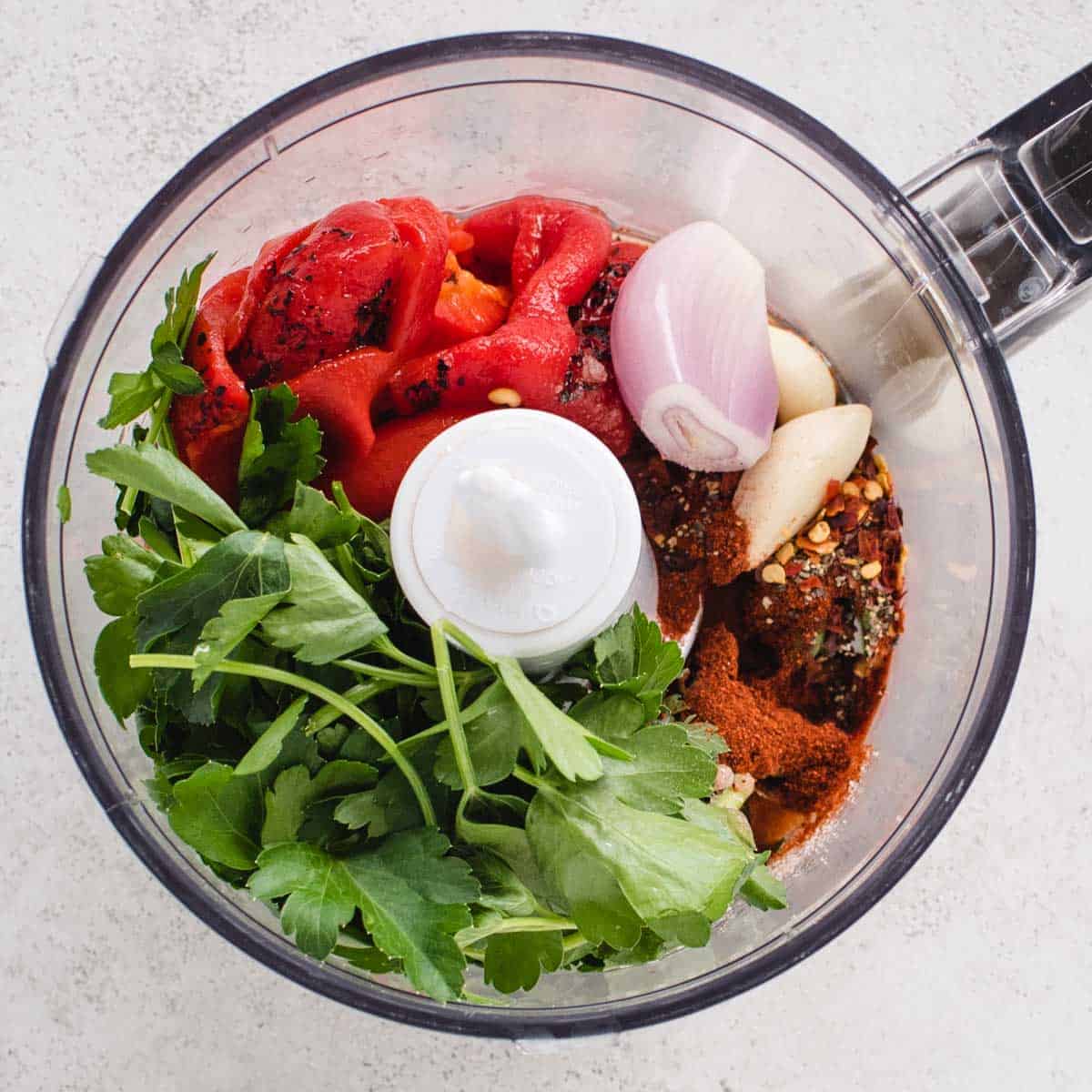
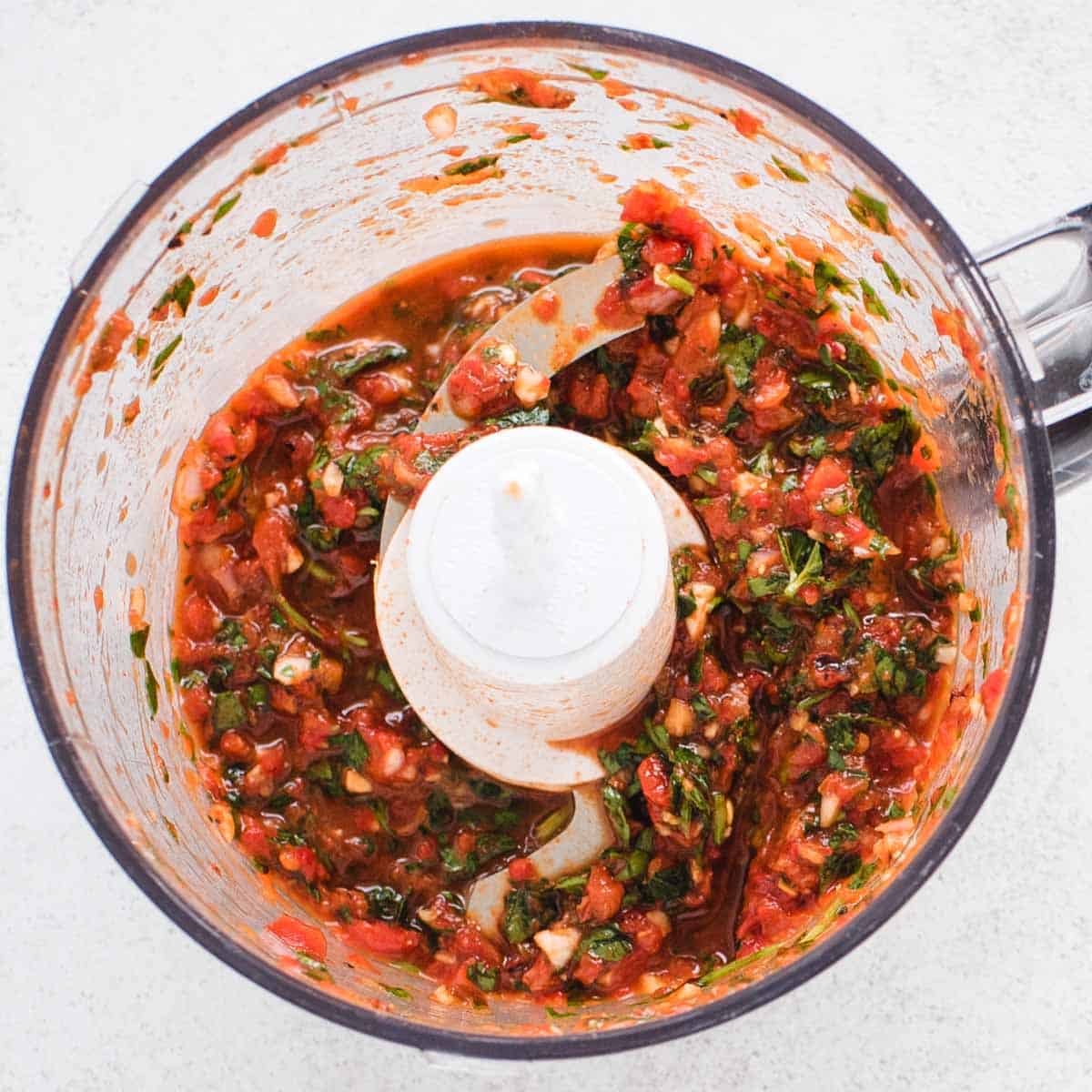
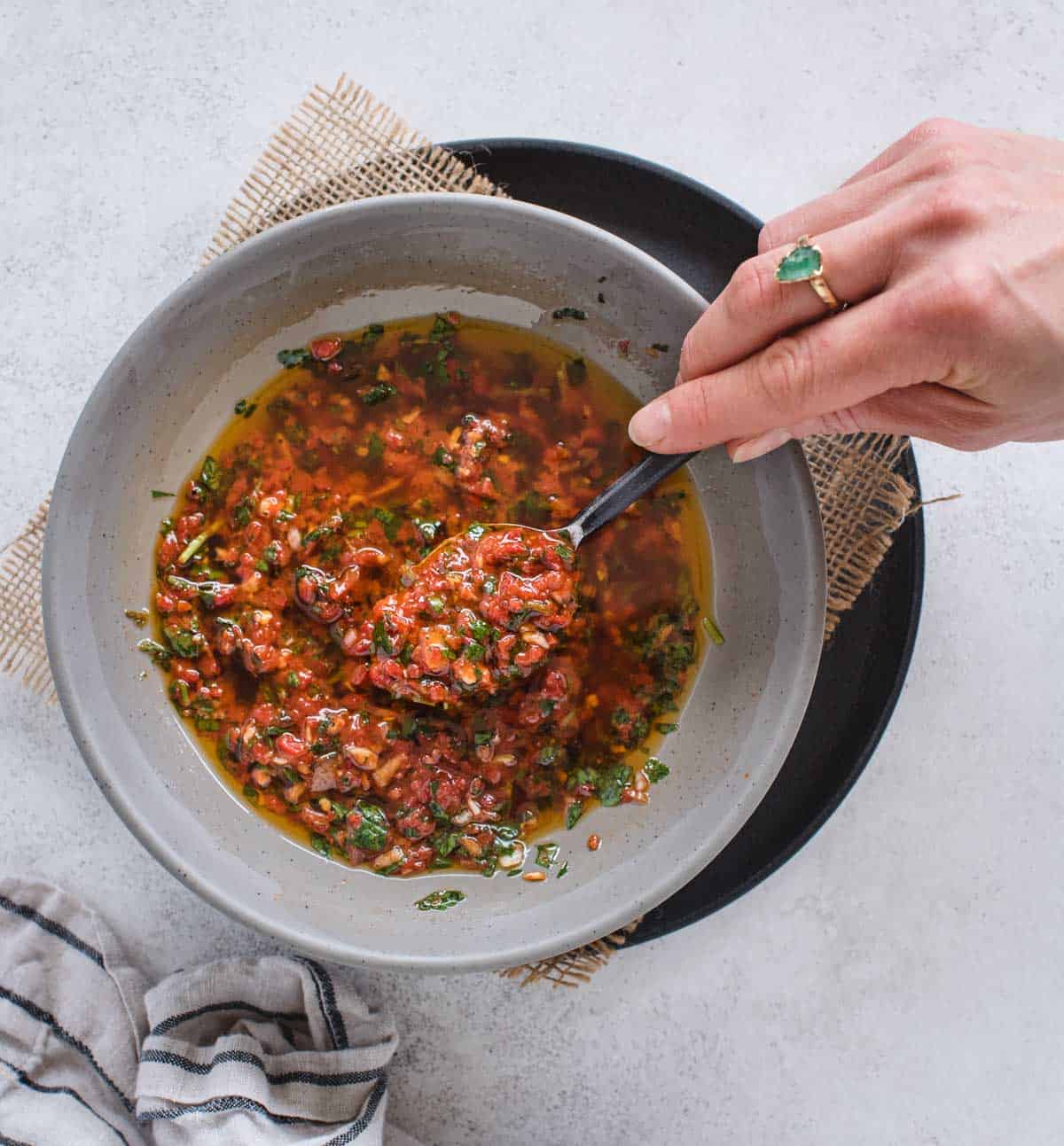
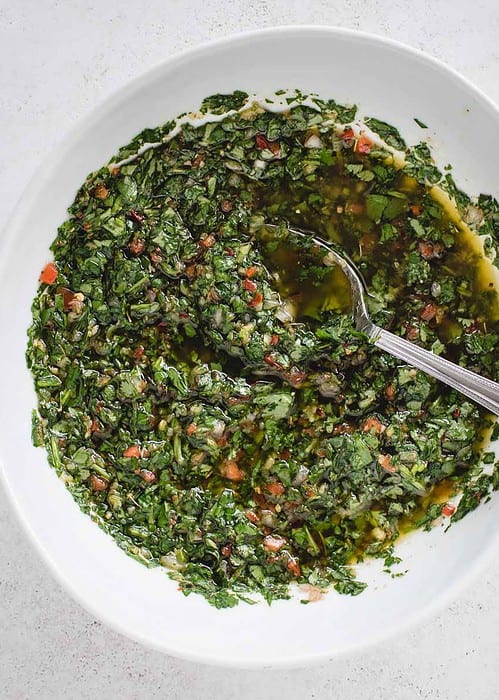
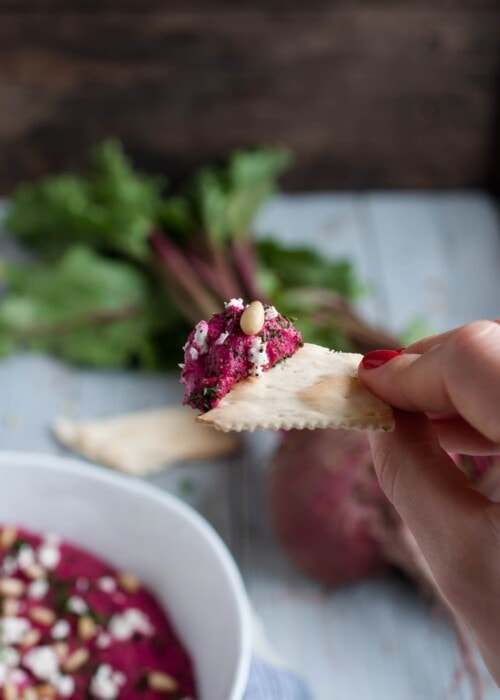
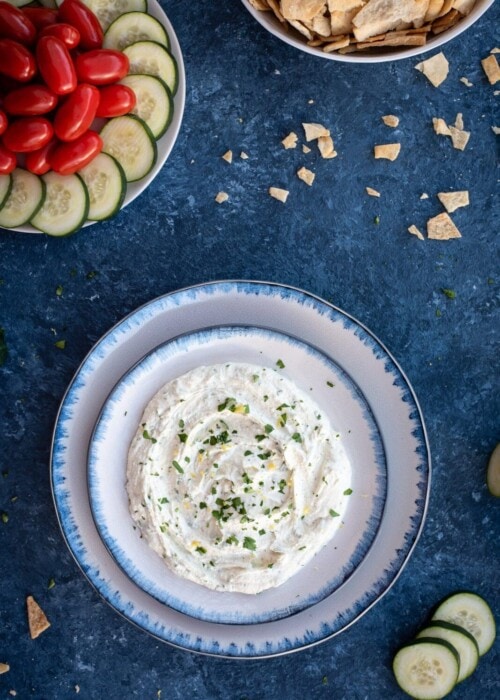
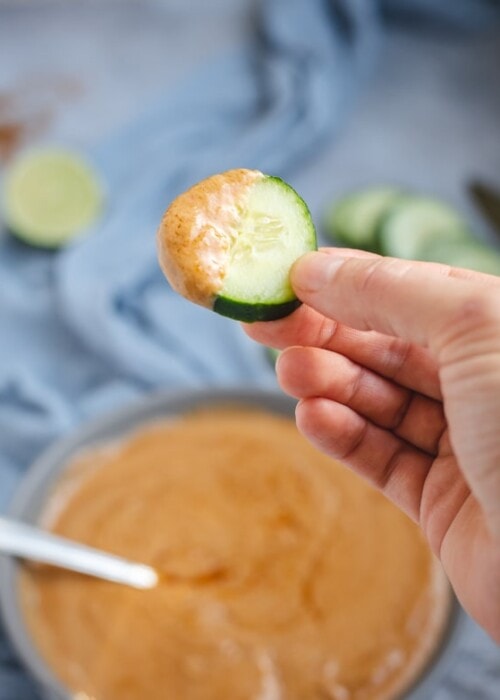
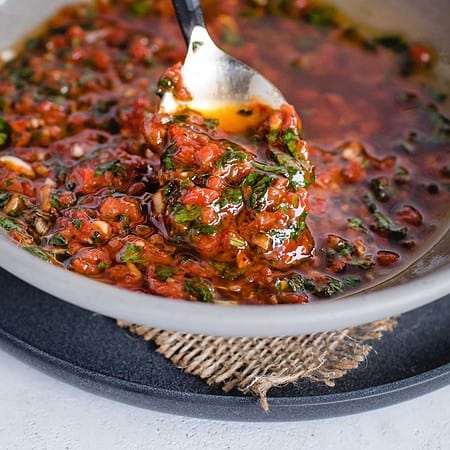










Comments & Reviews
This is amazing! We made it the other night with steaks and grilled veggies and it was the perfect sauce to complement them both.